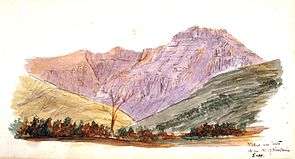Kootenay Pass
| Kootenay Pass | |
|---|---|
| Elevation | 1,775 m (5,823 ft) |
| Location | British Columbia, Canada |
| Range | Selkirk Mountains |
| Coordinates | 49°3′29″N 117°2′31″W / 49.05806°N 117.04194°WCoordinates: 49°3′29″N 117°2′31″W / 49.05806°N 117.04194°W |

Kootenay Pass, known locally as "the Salmo-Creston" is a mountain pass in the Selkirk Mountains of British Columbia, Canada. It is utilized by the Crowsnest Highway to transverse the Selkirks, connecting the communities of Salmo and Creston. At its opening the highway route was also dubbed the Kootenay Skyway.
A webcam operates from Fall through Spring that shows the current conditions of the pass.
The Kootenay Pass is one of the highest highway-served passes in Canada that is open year-round, although it is frequently closed in bad weather for avalanche control and clearing of debris. Most avalanche control at Kootenay Pass is done by a Gazex system that allows avalanche technicians to trigger avalanches remotely from the comfort of their office at the summit, visible from the summit webcam. This Gazex system has allowed for the removal of large artillery stations that were used to fire ballistic shells into start zones. On occasion, artillery shells would not explode and had to be found and destroyed during summer months with considerable expense and danger.
When Kootenay Pass is closed, travelers coming from the east must drive north from Creston to the Kootenay Lake Ferry at Kootenay Bay, then from Balfour through Nelson to Castlegar to get back on Highway 3A. When the Pass is closed, ferry waits are often long. The Kootenay Lake Ferry's first sailing is from Balfour at 6:30 am and the last is at 10:20 PM from Kootenay Bay.
The Kootenay Lake Ferry Schedule is available here.
Bow Summit on the Icefields Parkway in Banff National Park, Alberta, is higher at 2088 metres. Highwood Pass in Kananaskis Country, Alberta, is even higher at 2206 metres, but it is traversed by Highway 40, which closes from December 1 to June 15 every year.